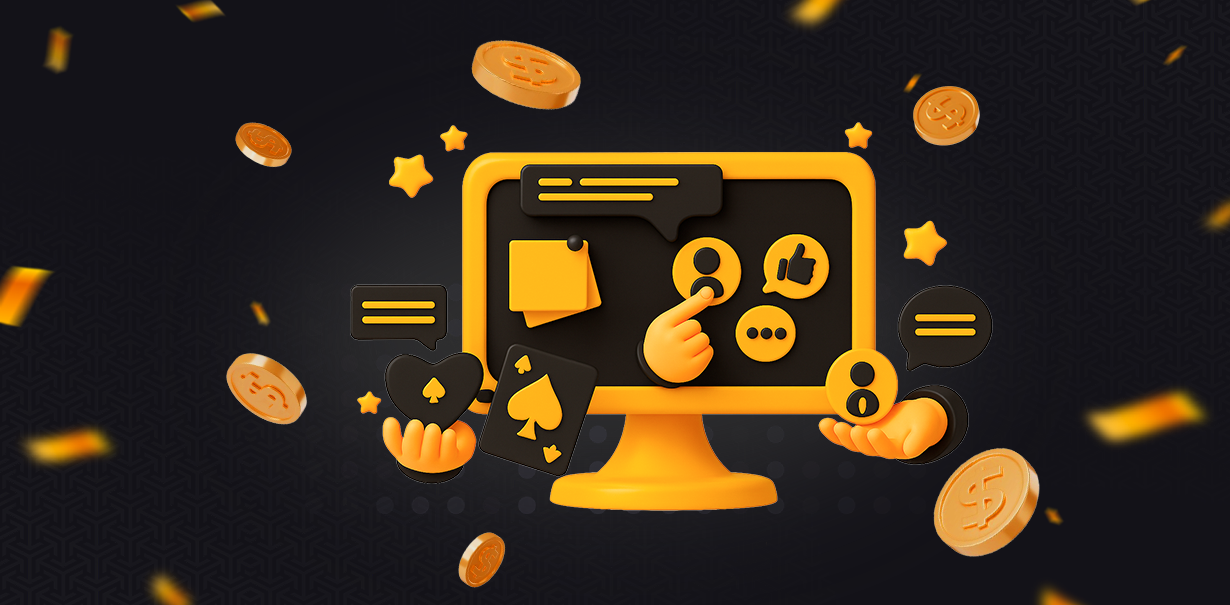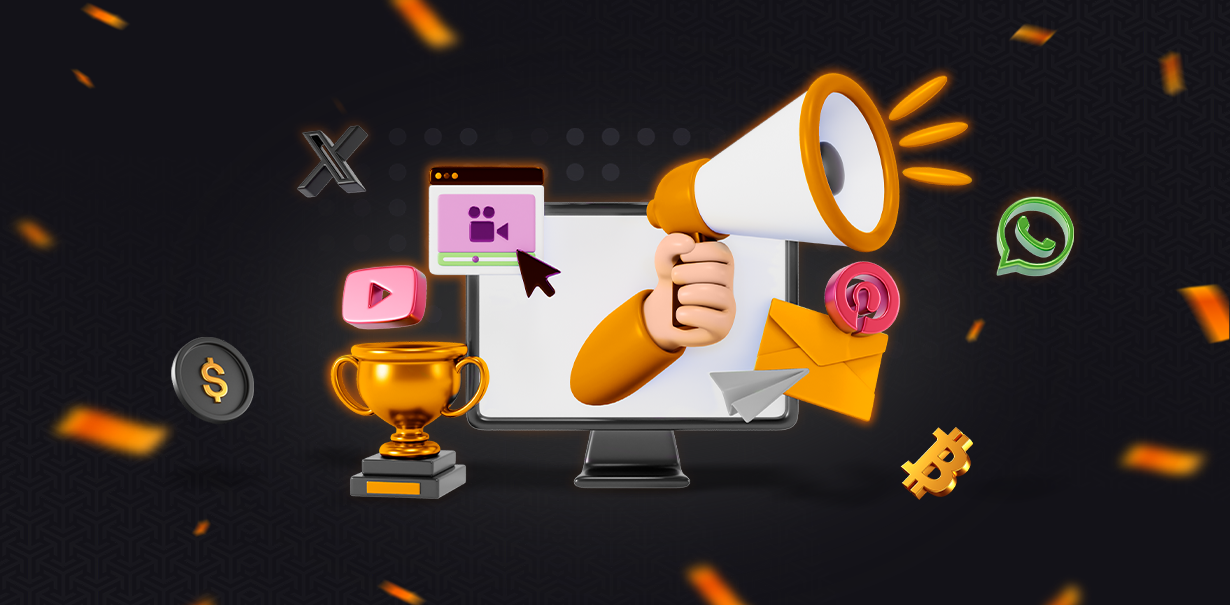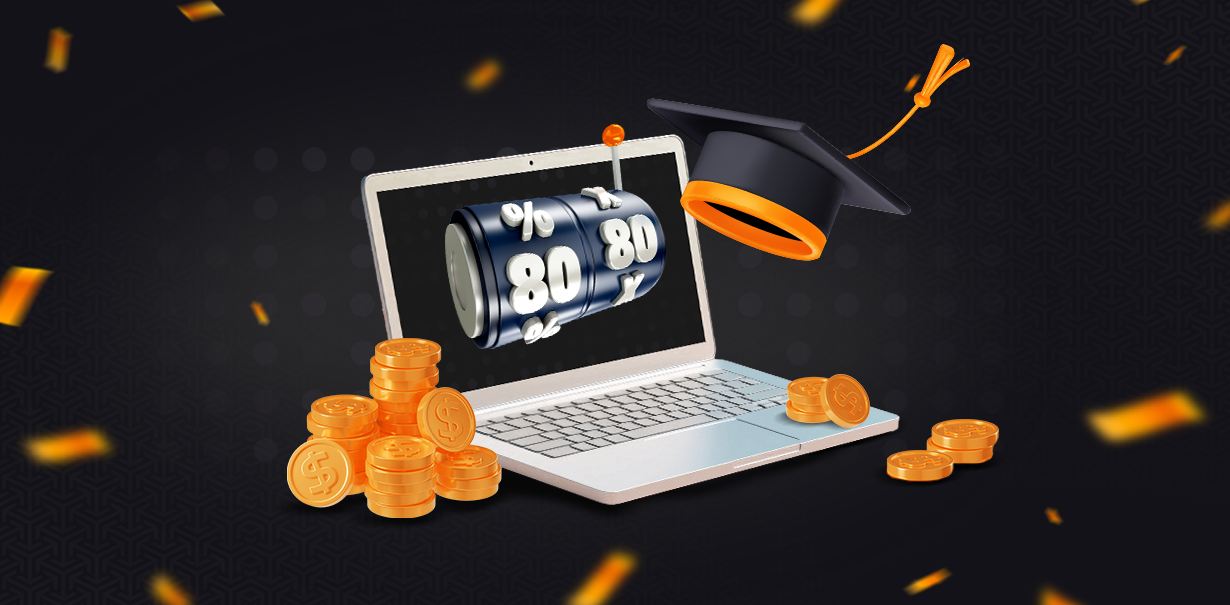Push Notification Advertising vs Native & Popunder: Which Ad Format Wins in 2025?

Why Choosing the Right Ad Format Is Critical for Conversions and ROI
In the world of digital marketing, each advertising format works in its own way: some are better at retaining attention, while others stimulate quick action. For affiliate marketing, the choice between native ads, push notification ads, and popunder ads affects not only the CTR but also the final ROI. The format determines what traffic you will receive, how much it will cost, and what its quality composition will be.
For example, push notification ads are suitable for instant delivery of offers, especially in niches such as betting campaigns or short-term promotions, where speed of response is important. Native ads are effective for warming up the audience when trust and integration into the content are needed. And popunder ads can quickly generate a large flow of users, albeit with a higher risk of attrition.
What Are Native Ads, Push Notifications, and Popunder Formats?
In modern affiliate marketing, there are three popular formats that constantly compete with each other in the battle for effectiveness: native ads, push notification ads, and popunder ads. Each of them has its own display characteristics, interaction mechanisms, and influence on user behavior, which directly determines CTR, CPA, and traffic quality.
Native ads are advertisements that are organically integrated into the content, imitating the style and format of the publications on the page. Thanks to this, they look less intrusive, are better perceived by the audience, and increase trust. Push notification advertising works on the principle of instant notifications that appear on the user’s device screen, stimulating a quick response. Popunder ads open a hidden browser tab with the advertiser’s landing page, generating an instant flow of visitors.
Native Ads – Content-Like Placements That Blend into Editorial Feeds
Native advertising stands out because it looks like a natural part of the content rather than a separate ad unit. It blends in with the style of the platform, increasing user trust and reducing “banner blindness.” When combined with other formats, such as pop ads or push notifications, you can create multichannel campaigns that reach users at different stages of their interaction with the offer. Although push notification ads usually describe quick clickable messages, they can be skillfully integrated into a native strategy, enhancing the effect through repeated contacts. Using case studies, such as push notification ads examples, helps advertisers understand how to combine native materials with messages and other channels to increase CTR and conversions.
Push Notification Ads – Clickable Alerts That Appear on User Devices
Push notification ads are a format that delivers advertising messages directly to the user’s device screen in the form of a short but noticeable notification. Unlike banners or native ads, these ads appear on top of all windows, making them extremely noticeable. This makes push ads ideal for quick conversions, especially in betting campaigns, e-commerce, or VAS offers.
The main advantage of this format is that it instantly grabs attention, which increases CTR compared to traditional types of ads. Such ads can include a headline, image, and call to action, and are easily customizable by GEO, send time, and audience segments.
Popunder Ads – Hidden Browser Tabs That Load Behind the Main Window
Popunder ads work by secretly loading a new tab in the user’s browser, which opens behind the main window and becomes visible when they close the current page. This format is especially popular among affiliate marketing specialists who promote betting offers, software, mobile apps, and other offers where a large volume of instant traffic is important.
Popunders provide advertisers with wide reach and often have a lower cost per click compared to other channels, but they need to be used with caution to avoid negatively impacting the user experience or incurring penalties from ad networks.
Core Advertising Metrics Comparison: Which Format Wins on CTR, CPA, and Traffic Quality?
When analyzing native ads, push notification advertising, and popunder ads, the key metrics for comparison remain CTR (Click-Through Rate), CPA (Cost per Acquisition), and traffic quality. Notification push ads usually have a higher CTR due to the “direct appeal” format on the user’s device. However, the cost per acquisition (CPA) in this channel depends on the quality of segmentation and the relevance of the landing page.
Native ads may show a slightly lower CTR, but they compensate for this with high-quality leads — the audience interacts with the content more consciously, which reduces CPA in long-term campaigns. As for popunder ads, they often generate a large amount of traffic with a low cost per click, but the quality of this traffic can be unstable. Therefore, the choice of format should be based on a balance between cost per click, target audience, and expected conversion rate.
Best Performing Format for Gambling, Betting & Sweepstakes Campaigns
Push notification ads and popunder traffic perform best in gambling and betting offers. The first format provides quick audience responses, which is especially important for short-term betting campaigns or sweepstakes, where conversion occurs in the first few minutes after contact with the ad. Popunder ads provide many impressions and are suitable for scaling, especially when broad GEO coverage is required.
At the same time, native ads remain a powerful tool for brand promotion in the gambling and betting industry, especially when creating content marketing campaigns focused on increasing user trust.
Native vs Push vs Pop for Nutra Offers and Health-Related Products
In the Nutra and health-related products niches, the choice of advertising format directly affects the effectiveness of the campaign. Native ads often lead the way in this category because they allow you to organically integrate the offer into an article or blog, increasing audience trust and stimulating targeted clicks.
Push notification ads in Nutra campaigns demonstrate a high CTR, especially when the messages contain elements of urgency (for example, “only 5 sets left”). However, for products that are difficult to explain, the effect may be lower, as users need time to familiarize themselves with the benefits. Popunder ads in this niche work better for large-scale coverage with cheap traffic, but require strict optimization to avoid wasting budget on non-targeted users.
What Works Best for Utilities, Mobile Apps, and VAS Offers
For utilities, mobile apps, and VAS offers, ads push notification are becoming the leader. They provide quick contact with the user and encourage immediate action, which is critical for app installations or service activations. When configured correctly, GEO and push notification delivery times can achieve above-average CTRs for the market.
Popunder ads in this segment allow for mass reach and are suitable for testing different creatives or offers. This works especially well in countries with cheap popunder traffic, where analytics can be quickly collected. Native ads are less common in this segment, but they can be effective for B2B apps or high-intent utilities when more details need to be conveyed through content.
B2B, SaaS and High-Intent Products – Why Native Ads Dominate
In the B2B, SaaS, and high-end product segments, native ads often outperform push or popunder ads due to their more trustworthy perception and contextual placement. Users in these niches are looking for detailed information, and ads that are organically integrated into the content allow you to convey an expert message without being intrusive. This is especially important in cases where the purchase decision takes longer and the conversion path involves several stages of interaction. Native formats also integrate better into content platforms, which increases traffic relevance and CTR.
Pros and Cons of Native, Push and Popunder Ads
Each format has its own “ecosystem” of opportunities and limitations. Native Ads look like a natural part of the content, which builds trust and does not cause rejection. Push notifications provide instant contact with the user and can stimulate quick transitions, but require careful work with frequency and content to avoid “banner blindness.” Popunder ads provide large-scale display and longer viewing of the offer, but if they are too aggressive, they can reduce traffic quality or cause sanctions from platforms. A competent combination of these formats, taking into account their nature, allows you to create multichannel strategies that work for a stable ROI.
Those who want to understand what is push notification ads and what is push notification advertising are should consider push notifications as a tool for quickly attracting traffic, native ads for long-term trust, and pop-unders for wide coverage.
Native Ads – Pros, Cons & When to Use Them for Scalable ROI
Native advertising works effectively in niches where trust and contextual relevance are important. Its main advantage is that it blends organically into news feeds or editorial content, reducing “banner blindness” and increasing CTR. For brands in affiliate marketing or premium products, it is an opportunity to convey complex messages without direct, aggressive presentation. The downside is the need for careful selection of visuals and copy, as well as a longer campaign launch time. This format is worth using when the goal is not just traffic, but high-quality leads with high value for the business and long-term return on investment.
Push Notifications – Advantages, Limitations & Campaign Strategies
Push notifications are targeted messages that appear on the user’s device even when they are not on the website. They allow you to quickly deliver offers, attracting attention with a bright headline, relevant image, and limited number of characters. Among the advantages are high clickability, the ability to target accurately, and quick campaign launches. The limitations lie in the need to balance the frequency of displays and the quality of content so as not to cause unsubscribes and a loss of trust. Push advertising is most effective when implemented in conjunction with personalized offers, audience segmentation, and A/B testing, adapting messages to time zones, behavioral patterns, and current interests.
Popunder Ads – Pros, Risks & How to Use Them Without Getting Penalized
The popunder format works by opening an additional tab in the browser after the user interacts with the site. Its main advantage is its large reach and ability to display the offer at a time when the user’s attention is not focused on the main content. For affiliate marketing in the areas of betting or entertainment offers, this is a stable source of popunder traffic at a relatively low cost. At the same time, excessive frequency of displays or aggressive settings can lead to sanctions from networks and browsers. To minimize risks, it is worth limiting the number of displays per user, using relevant offers, and carefully monitoring platform policies.
Best Practices and Creative Tips for Each Format to Maximize CTR and Conversion Rate
Regardless of whether you work with native, push, or pop ads, testing and optimization remain the foundation of success. For the push format, it is worth studying what push notification advertising is and understanding how to push notification advertising so that it does not appear intrusive. A successful approach is to use segmentation and geotargeting, which are easy to set up in push notification platform ads. Native campaigns benefit from relevant headlines and pre-landing pages that “warm up” interest, while popunders provide mass reach and work on a large scale. Variations in creatives, changing display times, and combining different formats all create an environment where even the most popular push notification ads can deliver higher results thanks to channel alignment.
Optimizing Push Notifications: Copywriting, Timing and GEO Settings
A catchy headline and relevant image are the basis for a high CTR, especially if you focus on the best push notification ads with examples that have already proven their effectiveness. Timing affects perception — sending messages during peak activity hours increases clickability, while automatic segmentation by time zone helps avoid “nighttime” unsubscribes. In-page push notification ads are convenient for maintaining constant contact with the user even without external platforms. Using the best push notification ads network gives you access to higher quality traffic, and advertising push notification ads with A/B testing of headlines allow you to find the optimal formula faster. Among the tools to consider are push notification ads android, mobile push notification ads, and web push notification advertising — each channel has its own audience and behavioral patterns.
Building Effective Native Campaigns: Headlines, Pre-Landers and Audience Fit
Native ads and push notifications offer different scenarios for attracting traffic, but native advertising allows you to delicately integrate your offer into the content. A high-quality headline that matches the user’s intentions holds their attention and encourages them to click through to the landing page. A pre-lander helps to “warm up” interest, especially before betting or iGaming offers, and reduce the cost of conversion. Adapting content to the interests of the audience segment is critical for long-term ROI, as is testing banner and text options. Using a combination of both popunder ads and push notifications can enhance the effect, with push creating instant interest and pop providing additional contact with the offer.
Making Popunders Work: Redirects, Page Speed and Offer Matching
Redirects should be built so that the user immediately lands on a relevant offer, without unnecessary intermediate steps. It is also important to test different traffic sources and correlate them with the product theme so that each impression is as relevant as possible to the audience’s interests. For affiliates, the effectiveness of popunders is enhanced when used in conjunction with other formats — for example, after you send ads through push notifications, users receive a repeat contact with an offer via pop. This allows you to monetize with push notification ads in combination with pop traffic, increasing overall CTR and conversion.
Which Ad Format Converts Best for Your Affiliate Goals?
If you need instant contact, push notifications are ideal: they are personalized, delivered instantly to the device, and can be segmented by behavioral and geodata. Understanding what push notification ads are and using push notification mobile ads or Android push notification ads gives you access to segments that respond best to direct offers. At the same time, push notification advertising platforms and push notification ads platforms allow you to configure testing and optimization of campaigns in real time. If you need a softer approach, native formats work on trust and loyalty, and popunders provide a stable volume of impressions with high reach. For scaling, pay attention to push notification advertising networks, choose from among the best push notification advertising networks, and combine them with push notification business advertising to expand your reach.



